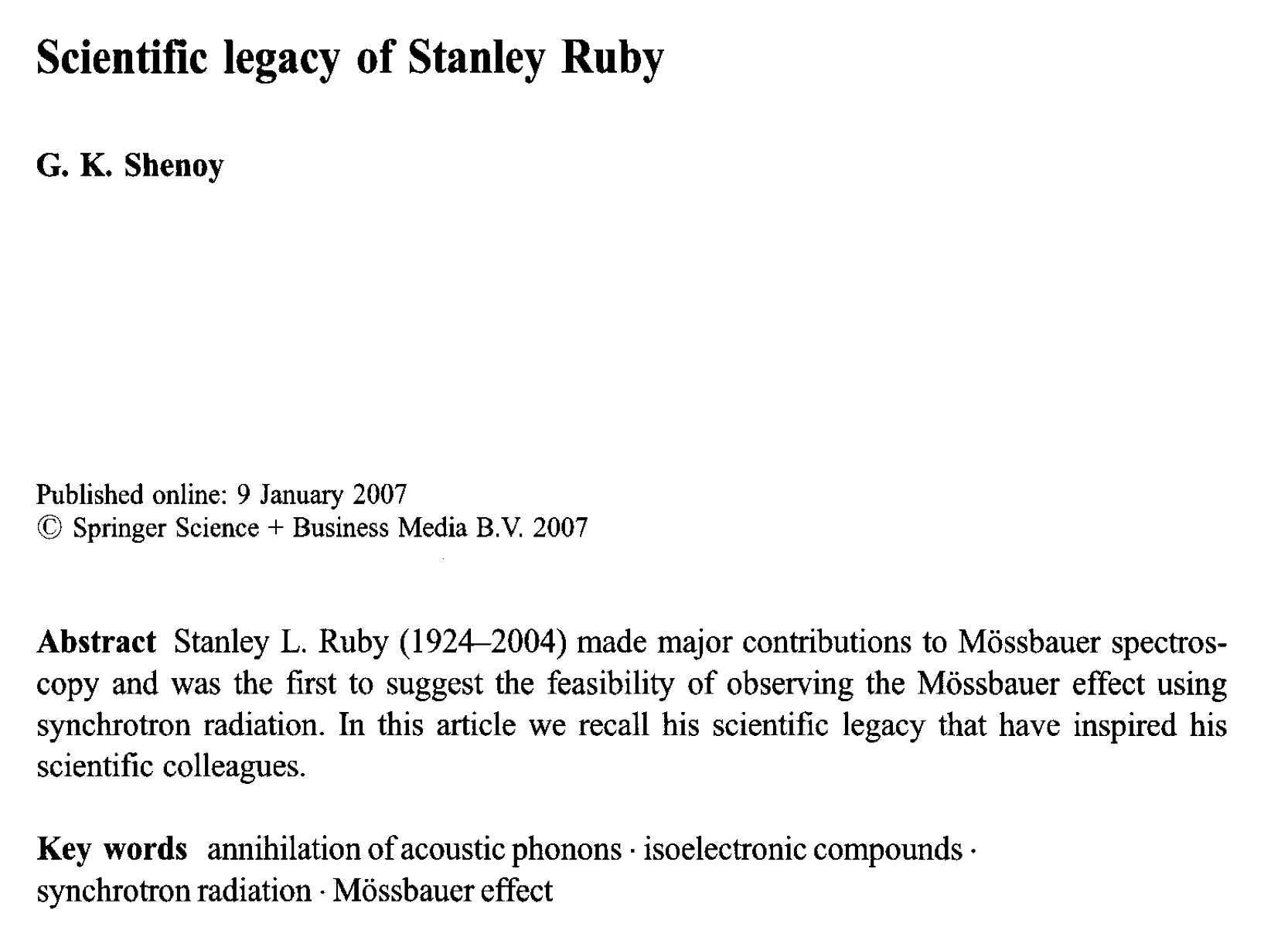"Scientific legacy of Stanley Ruby"—a longer version of Gopal's tribute
Way back when we posted a two-page appreciation of Stan's scientific career by Gopal Shenoy, one of his prime collaborators at Argonne.
The other day, I was speaking with Walter and Tanya and they reminded me about the conference dinner in Stan's honor that they had attended on Long Island in 2006. I looked that up and found that the event had been a part of the 4th Nassau Mössbauer Symposium, held in Garden City, NY, USA in January 2006.
The conference and its proceedings, edited by E.E. Alp and published later that year, were dedicated to Stan.
This volume contains the proceedings of the 4th Nassau Mossbauer Symposium, held in Garden City, NY, USA in January 2006. The conference and its proceedings are dedicated to one of the pioneers of Mossbauer Spectroscopy, the late Dr. Stanley Ruby, whose original ideas, insight and enthusiasm helped create new research fields. The volume reports on the progress in various areas of applications of Mossbauer Effect.
Among the papers given at the symposium and published in the proceedings is a much longer version of Gopal's review of Stan's scientific achievements.
In lieu of posting the full PDF for download, here is the beginning of the article with a summary of its major points. Paragraph breaks are inserted.
During his active scientific career, Stanley Ruby always addressed most fundamental aspects of physics without being a "reductionist" - asking questions regarding the fundamental interaction of electromagnetic waves with matter - nucleons, atoms, molecules and the condensed matter, and answering these questions with unique demonstration experiments.
This recollection paper is intended to be a brief compilation of Stanley Ruby's selected contributions. They are creation and annihilation of acoustic phonons, chopped gamma-rays, and jump diffusion in condensed matter. In addition, Ruby's nuclear physics background fitted best for him to identify many new candidate nuclear resonant transitions across the nuclear periodic table; and his grasp of chemical physics led to the development of isomer shift systematic among isoelectronic compounds of 5s-5p atoms.
Finally, Ruby's most pragmatic suggestion in 1974 to use synchrotron radiation to observe nuclear resonance, and its eventual demonstration, addressed many fundamental aspects of collective nuclear excitation process and gamma-ray coherence. Further more it opened many new avenues of application of the tool to a broader area of science which otherwise would have been impossible with the traditional approach of using radioactive sources in performing Mossbauer spectroscopy measurements.

